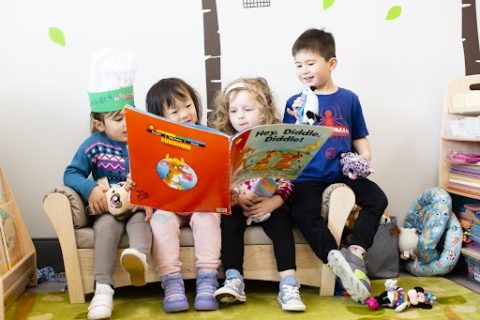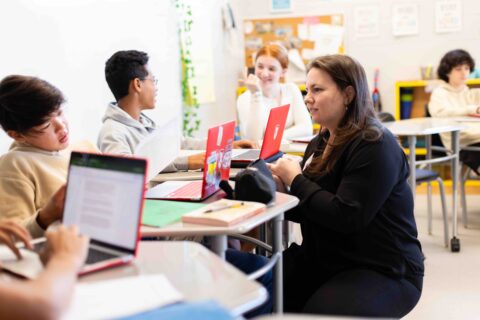At the CTTL, we’re focused on using the best of Mind, Brain, and Education Science research to help teachers maximize their effectiveness and guide students toward their greatest potential. Doing that often means addressing what we like to call “Learning Myths”—those traditional bits of teaching wisdom that are often accepted without question, but aren’t always true. We also like to introduce new insight that can change the classroom for the better. In our Learning Myths series, we’ll explore true-or-false statements that affect teacher and student performance; for each, we’ll dive into the details that support the facts, leaving teachers with actionable knowledge that they can put to work right away.
True or False? Typing notes in class is just as effective as handwriting them.
Answer: False (for most people)!
When it comes to taking notes, as with so many other things, the truth is less than convenient: for most students, the easiest way isn’t the best way.
According to education writer David Didau, our ability to type doesn’t actually do us any favors in terms of note-taking. Because typing is so fast for most of us, we can copy down every word we hear in class. While this might seem helpful on the surface, the problem is that we’re not really processing what we’re hearing—and we retain less meaningful information.
“Because handwriting is slower,” Didau says, “we are forced to interpret and paraphrase what a speaker says instead of simply producing a transcript. This act of synthesis leads to better semantic processing, which means that schematic changes to long-term memory are likely to be taking place as notes are taken.” The act of making the task harder is the thing that helps it stick. That’s why, as teachers, we need to coach our students when it comes to study strategies: they’ll often naturally gravitate toward methods that feel easier, even if they’re less effective in the end. (Hint: for more ways to encourage better learning strategies, check out our last blog post!)
How might teachers put this insight into action?
For most students, encouraging handwritten notes gives them an ongoing opportunity to practice processing what they hear and determining how important each piece of information is.
In classrooms where computers are generally allowed, handwritten notes can be a tough sell to students. However, you can mitigate their fear of missing key information by asking them to practice with a safety net. Here are some ideas:
-
Ask students to take notes by hand for one session. Encourage them to use graphic elements like diagrams or mind mapping as they see fit—because the brain uses separate pathways for words and pictures, activating both at once provides an opportunity to integrate them (a process called dual coding). To alleviate potential worries about missing something important, assure them that you’ll hand out a set of printed-out class notes that they can review afterward.
-
Set each student up with a note-taking buddy. Provide time after the lesson for buddies to compare notes and share what they learned (and check to see what they might have missed).
In addition to increasing meaningful processing, recording notes by hand opens up an opportunity for metacognition. As students take notes, encourage self-inquiry: What strategies work best for me? What are my strengths and weaknesses? The best way to capture and interpret information may vary from subject to subject, so it’s helpful to encourage reflections like these over time.
On that note: of course, there are some exceptions to the handwritten-is-best rule. Students who struggle with motor control or dysgraphia, for example, should have the option to use whatever methods work best for them! And students with attention issues may learn best by not taking notes at all; their ideal option may be the opportunity to just listen, without the distraction of having to record anything. In short: the best choice may vary from student to student. Use your judgement and nuanced understanding of your students’ needs to help guide them forward.
Overall, note-taking is an excellent area in which to teach strategies alongside content—something we practice constantly at the CTTL. Keep the conversation going with your students as they try new things. Is this strategy working for you? How can you fine-tune your approach? Remind them that their brains are constantly growing and changing—and that they always have the power to increase their capacity for learning.
Looking for an extra serving of strategy with your content? Look no further—we’ve always got both! The CTTL’s newest endeavor, Neuroteach Global, helps teachers infuse their classroom practices with research-informed strategies for student success—in just 3-5 minutes a day, on a variety of devices.




